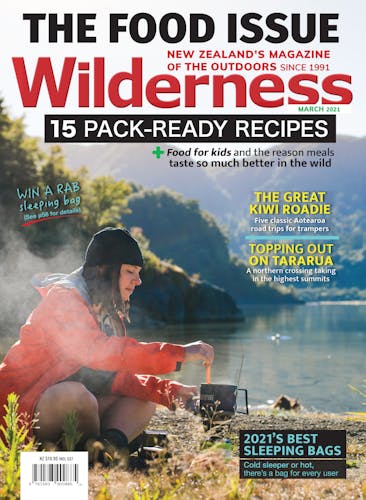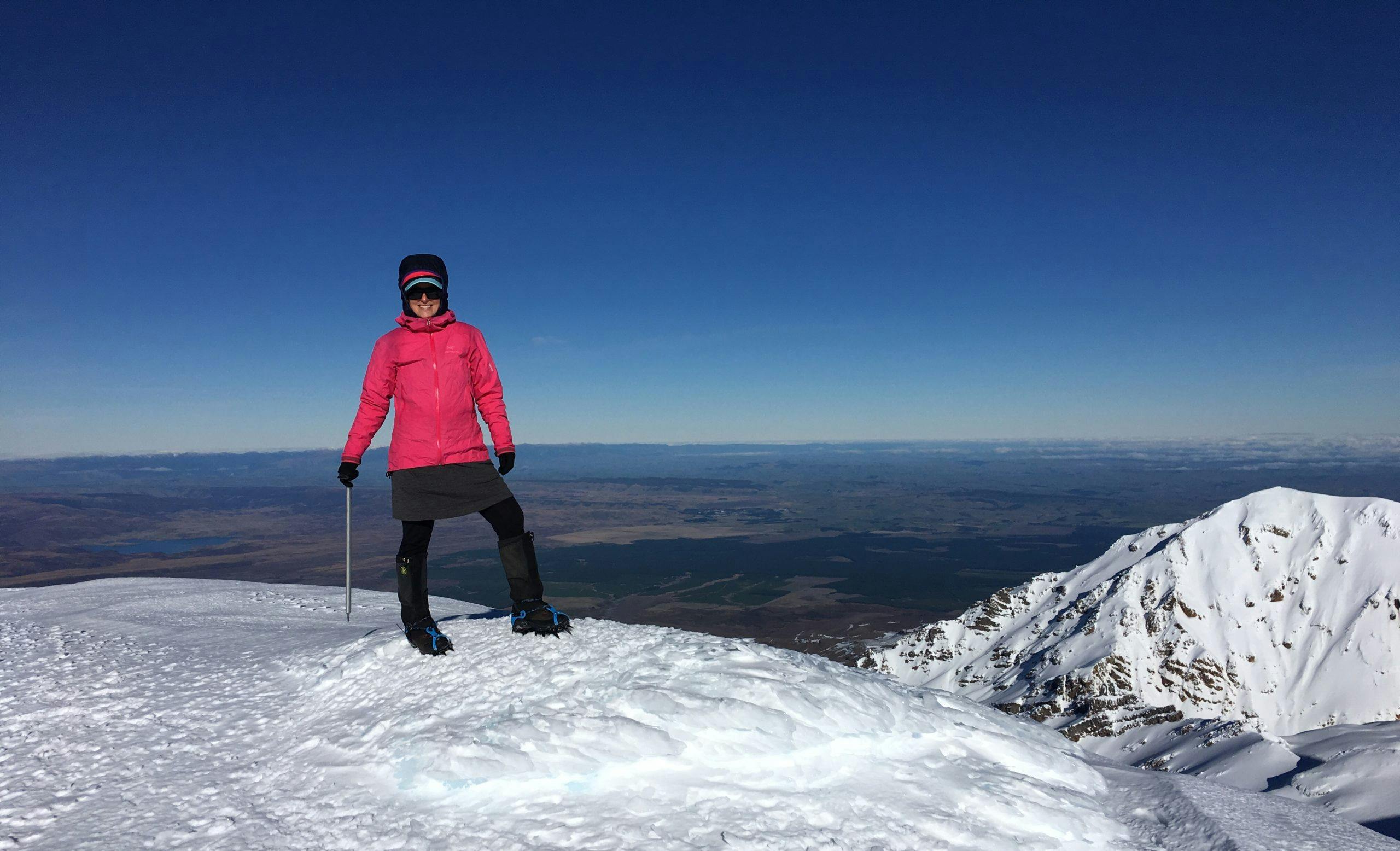Is the humble tramping skirt having a revival? Long-time skirt wearer Hazel Phillips tugs at a thread from the fabric of sartorial history.
To climb Aoraki/Mt Cook these days you need ice axes, crampons, a rope, snow anchors, prussicks, a belay device … the list goes on. When Freda du Faur, the first woman to summit Aoraki, climbed it 1910 she also needed a skirt (not to mention a guide and a chaperone). Edwardian custom demanded the feminine attire, although practicality called for pants. Amid great controversy and further hand-wringing advice from non-climbing ladies concerned for her reputation should she wear pants, she devised a compromise and wore a knee-length skirt over knickerbockers with puttees up to her knees. It was a sensation; most ladies on the lower slopes would wear skirts to their ankles.
Even Freda considered the skirt to be ‘brief’, and when she worriedly showed it to her guide, Peter Graham, for his approval, he grinned and said: “Skirt! I should call it a frill.” (The ‘frill’ can be examined in a commemorative photo taken of Freda in front of a boulder in the Hooker Valley after her successful climb of Aoraki.)
Shorts are what most trampers wear, but I’d been wearing a merino mini-skirt for many of my trips even before I read about Freda’s tricky situation in her book The Conquest of Mount Cook.
The humble skirt has many advantages in the outdoors. You can get changed more easily while at the same time preserving your modesty, right in front of other hut users. Switching from pants to skirt or vice versa is likewise supremely easy. And, pardon the lack of delicacy, going for a wee in the bush is a simpler affair with much less risk of accidentally peeing on yourself or your shorts.
I began wearing a skirt after a male friend said he’d done the Heaphy Track and deemed it so easy you could do it in “Crocs and a nightie” (although I believe he didn’t wear either). I was booked to do it with two female friends and while we had little appetite for tramping in Crocs, I thought a trio of women tramping in nighties could be a fun spectacle. So I acquired three short, frilly night dresses from K-Mart and they worked a treat. Even in cooler weather, they were banging – simply layer your merino leggings and long-sleeved top underneath and you were hardly even compromising the fashion appeal of the whole setup.
Warm, practical and a hat-tip to the early bad-ass women climbers of New Zealand mountaineering – what more could you ask for? The only real potential disadvantages could be chafing, for some, and a very slight possibility of catching crampons on the hem, a risk that I think exists more inside my paranoid mind than in reality.
Skirts aren’t just for the ladies, either. I made the acquaintance of tramper Anthony Behrens on a Ruahine trip when he was wearing a kilt made by Mountain Hardwear and which he wore while walking Te Araroa. “It’s way better than shorts,” he says. “When I wear shorts, I need a belt – which becomes awkward when combined with the hip belt of a heavy pack. Then there’s going for a pee. Peeing in a kilt is so much easier than in shorts because there’s no faffing around undoing stuff. All guys should wear them.”
Behrens hasn’t had any weird comments, except when he hitchhiked and was picked up only because the driver thought he’d be Scottish and was hence disappointed by his Kiwiness.
“The weirdest thing about a kilt is that older women like to touch it,” he says. “Several times they’ve taken liberties with my hemline and pleats. But I understand – I love the pleats too.”
Early climber Constance Barnicoat was the first woman to cross the Copland Pass in 1903 and she regularly eschewed the skirt for trousers. A journalist wrote in the Ashburton Guardian: ‘Miss Barnicoat’s climbing dress is a novel one, and, if worn in the city, would be responsible for no small sensation.’
Barnicoat was outspoken on the impractical nature of wearing a skirt, ‘even the shortest’, while climbing. Each to their own.
Inspired by Freda and her forthright audacity, I climbed Te Heu Heu (2732m), the northernmost of the summit peaks on Mt Ruapehu. I wore a skirt, shorter than Freda’s, and far more practical, and was accompanied by neither a guide nor a chaperone, but by a married male friend. I hoped Freda would appreciate my bucking of the convention on her behalf from beyond the grave.








